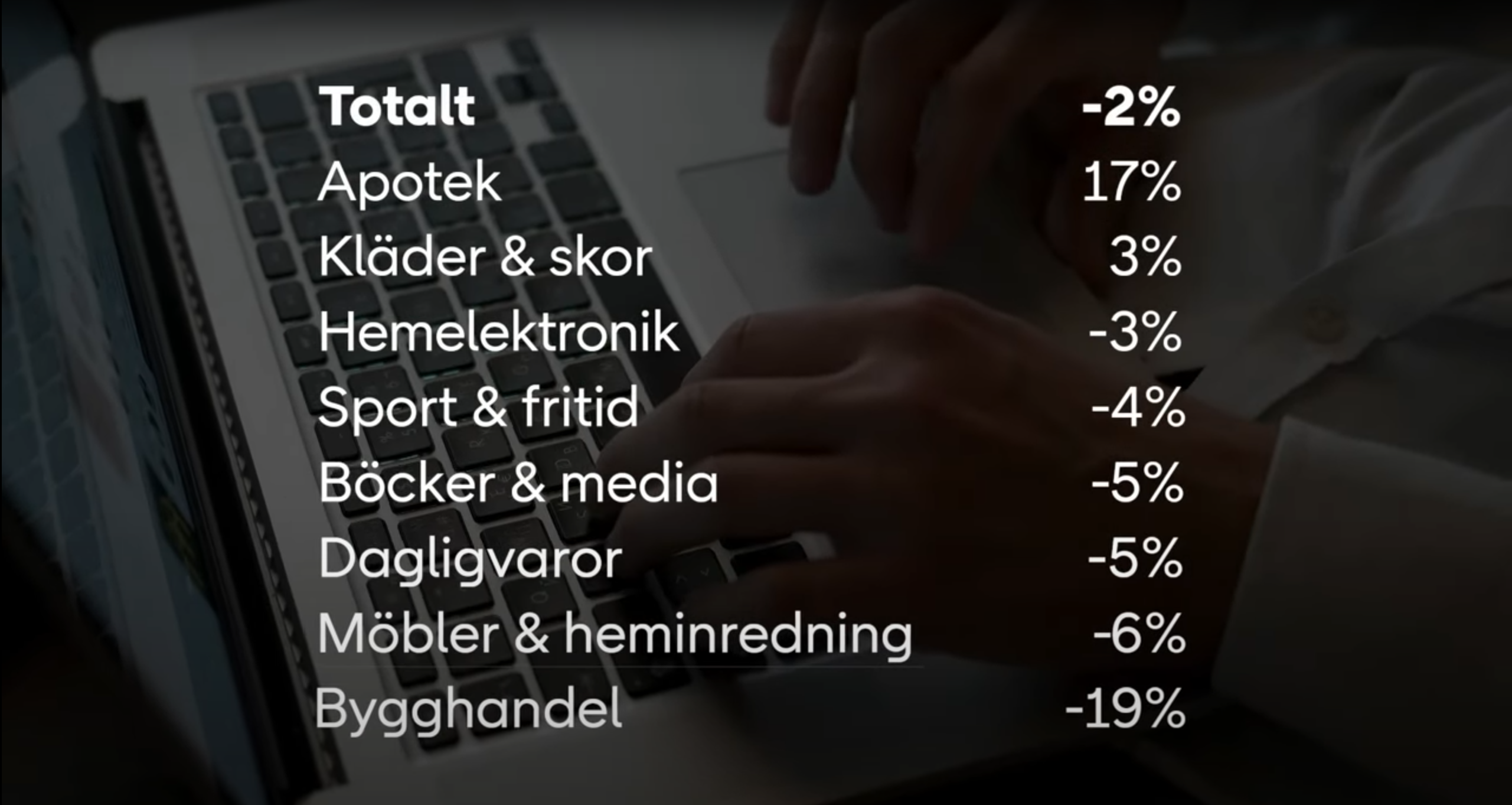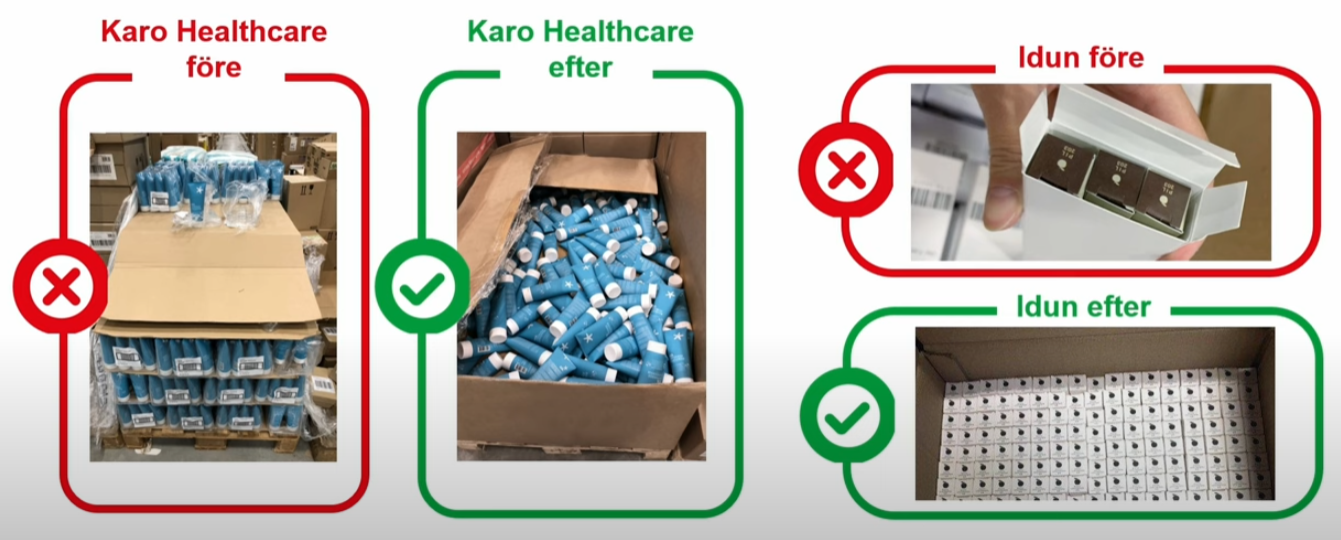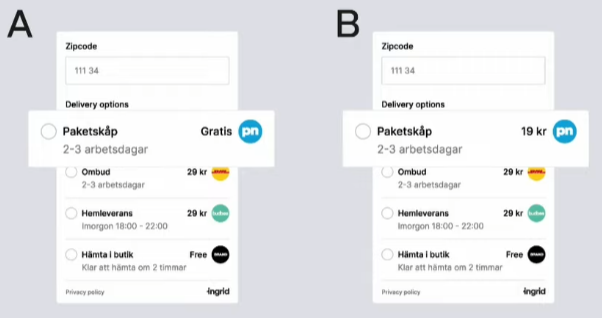PostNord Retail Day began with the presentation of the annual report E-barometern 2023. The pharmacy industry once again accounted for the largest growth of 17%, while the construction trade decreased 19% in 2023. The grocery trade is rather stagnant as prices are squeezed and low-cost alternatives are sought.

One insight from the Christmas shopping and Black Friday is that consumers shopped more strategically and spread out shopping over several weeks. Something that can also be grateful for getting the logistics in better order and spreading out the packages and deliveries over several days. We will probably see that this year as well.
26% of Gen Z and Millenials shop online 2-3 times a week. Mobile first is becoming increasingly important both for the site and the payment method. Gen Z sets new demands, and it is important to keep track of them, it is happening faster than we think.
A sustainable e-commerce transition – new legislative proposals set new requirements
Already in 2019, the EU's Green Deal was launched. There are approximately 25 legislative proposals on sustainability that will have a major impact on retail and e-commerce businesses. The new laws are expected to come into effect from 2025 to 2030. The ones that will affect e-commerce the most are:
- Ecodesign for Sustainable Products Regulation (ESPR) – The regulation on ecodesign for sustainable products shall promote the development of sustainable and circular products. With a digital product passport, customers should receive clearer information about the product's environmental impact in order to facilitate making more sustainable choices. Textiles will likely be the first industry this is tested on.
- Green claims – Today there are around 230 labels within the EU, which creates confusion for consumers. Through the proposal, labels are to be regulated by common criteria against misleading environmental claims, so-called green washing. Existing environmental labels will have strict requirements and go through an approval process. Can anyone understand what you are stating? Can you prove it?
- Right to repair – The proposal must promote repairs of products within the period for the right to make a complaint. Instead of receiving a new item, you have the right to have your item repaired. Rarely purchased items should have an increased lifespan. Member States will need to create an online platform for repairs to make it easier for consumers to compare different repair offers and find local repairers.
- Packaging and Packaging Waste Regulation (PPWR) – This proposal aims to reduce the use of packaging, prevent and reduce packaging waste, increase both reuse and recycling, and create a market for recycled materials.
- Corporate Sustainability Due Diligence Directive (CSDDD) – Here, the aim is to create a common EU framework that entails an obligation for companies to show due diligence. The purpose is to counteract negative impacts on human rights, climate and environment.
Those who already work systematically with sustainability issues can get a boost from it. The new legislative proposals will contribute to more equal competitiveness.
E-commerce tailored packages to reduce packaging
E-com ready is a project financed by ASTER (Alliance for Sustainable E-commerce) with, among others, Apotea, Blomsterlandet, Lyko, Amazon and PostNord. A guide will be released for other retailers with tips on streamlining. The focus was to reduce packaging waste and using e-commerce-adapted packages instead of traditional store-adapted packages. For example, a mascara that is delivered in packages of 3. Because it can sell out extremely quickly in an e-commerce, packages with a larger amount of products were requested. It is not only an environmental saving, but also a time and cost saving for unnecessary packaging. The employees no longer have to unpack packages in the packages to the same extent, which is a huge time gain.

The pricing strategies that increase profitability
One session was about price strategies to increase profitability, where Anders Ekman, co-founder and partner manager at Ingrid and John Ekman, founder Conversionista and Partner at ARC shared an A/B test that Kronans apotek did for different shipping fees. Having free delivery is something we used consumers to, even some shippers price themselves for a large volume. If you charge too little for shipping compared to what customers are willing to spend, you lose in profitability, and if you charge too much compared to what customers are willing to pay, you lose conversion.
In the case with Kronans apotek, an A/B test was done on 150,000 orders where for some customers there was a fee of SEK 19 for shipping. The result was -14% conversion at checkout, +2% turnover, but +11% profit margin. Test to get data and evaluate afterwards. Find the price strategy that suits your business best, if you look at shipping, it can be about both raising and lowering the price for shipping or the limit for free shipping.

Other pricing strategies they talk about is to see if you can show the most expensive item in the cart at the top because everything after that seems cheap. You can also test with different order of products or shipping options that are shown. Or to not always show all shipping options.
Consumer behaviour in a recession
One session was about consumer behaviour in a recession. Katarina Graffman, Dr. cultural anthropology talked about how we are not so loyal anymore, but when it comes to identity, we are still more loyal. The brands we use to build our identity.
Amer Mohammed, futurist, showed his insights on the future of retail in 2028. He believes that the next step from the web to the app will be virtual assistants. Generative AI will lead to virtual assistants. They will be in our devices. Instead of going through the web or app to get an answer or place an order online, we'll just ask our virtual assistant. Augmented reality – will be a digital layer in the future. If you see a nice piece of clothing when you walk down the street, you could see places to buy it directly in the glasses.
He believes that Assistant to Assistant communication (A2A) will be the new way to communicate. He also strongly believes in drone transport as battery technology is developing rapidly now. It will be important to optimize warehouses that adapts to drone deliveries.
In summary, the e-commerce map is being redrawn. It is important to be close to the customers and act quickly on the needs that exist. The need for collaboration and partnership is very important when customer behaviours change.
We can already book September 24 in the calendar when PostNord Retail Day 2024 returns with a quarterly report from the E-barometer.
